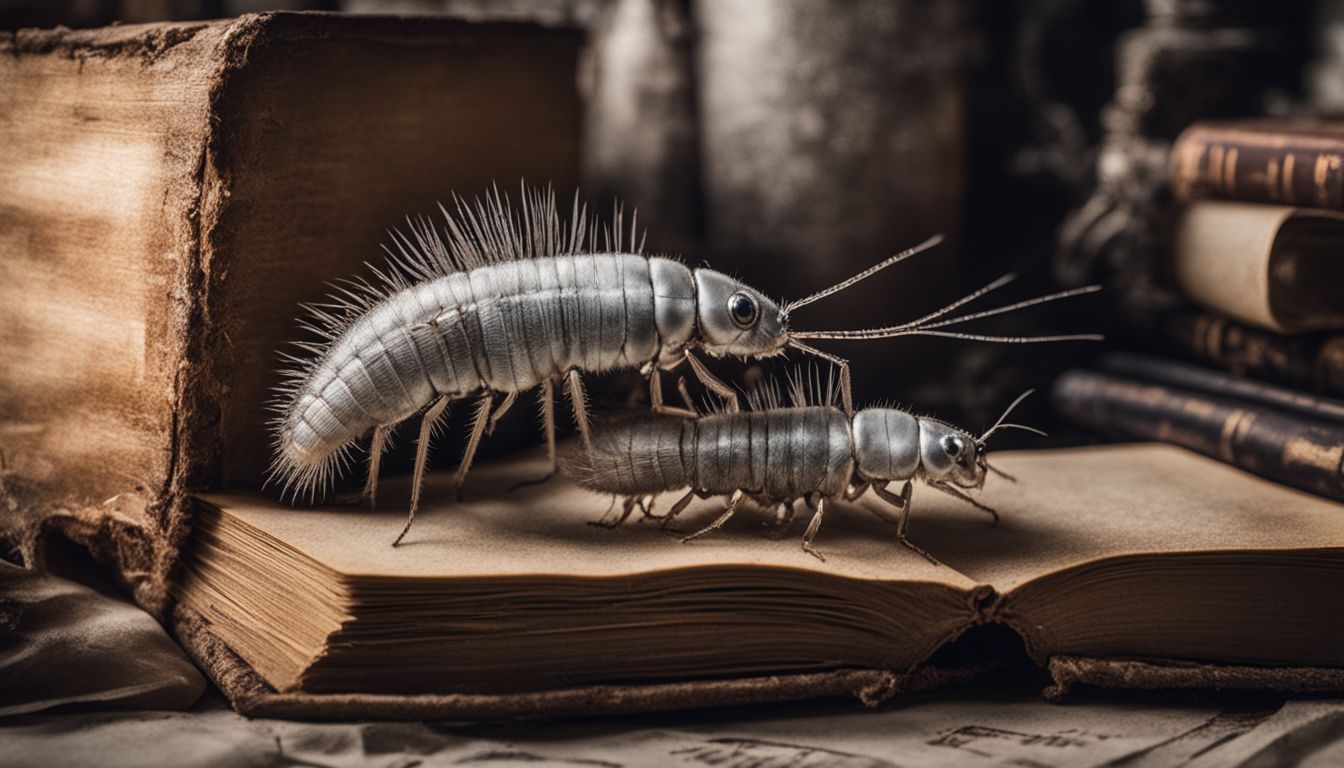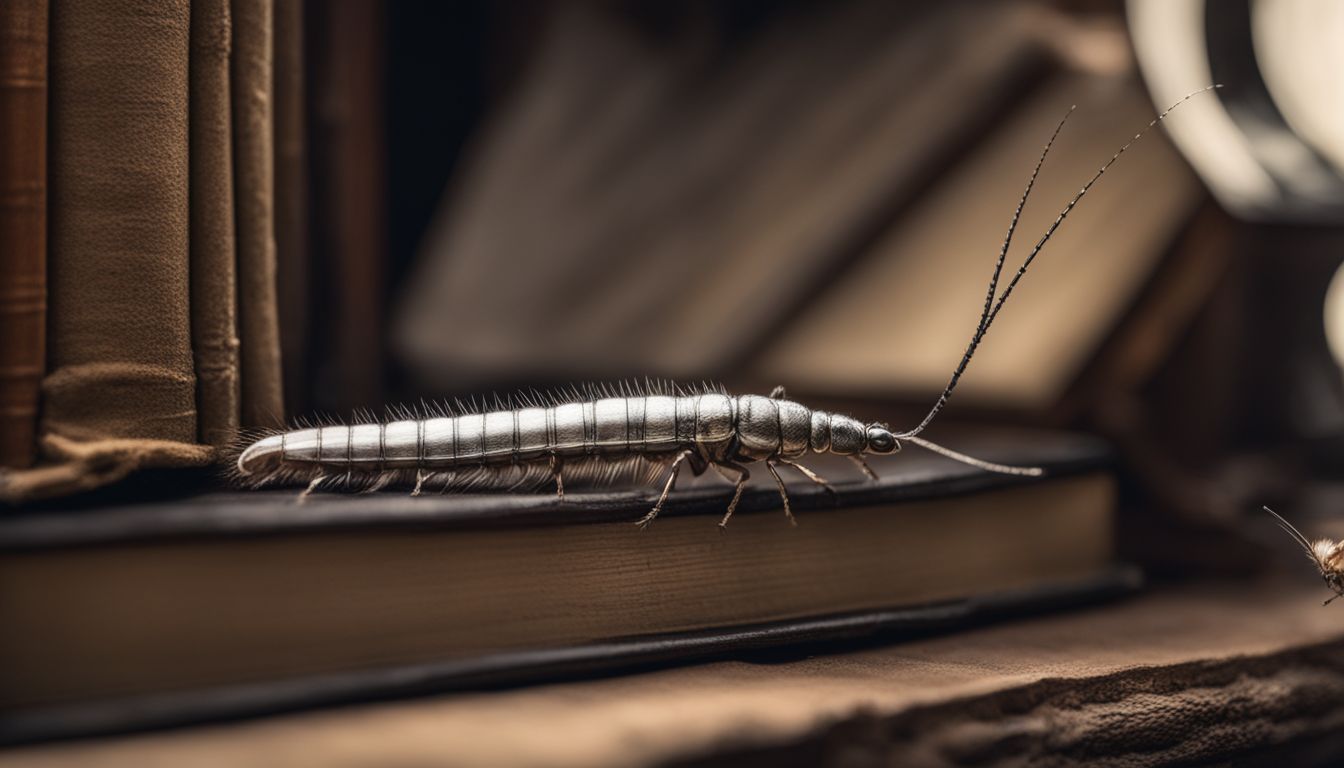“This post contains affiliate links. As an Amazon Associate, I earn from qualifying purchases”
Imagine discovering a tiny, elusive dancer in the quiet corners of your own home. Yes, we’re talking about silverfish—those small, wingless insects that dart across your bathroom floor or lurk inside an old book.
They’re often unwanted guests searching for starches and sugars to snack on but their secret world is fascinating. Intricately linked to this curiosity is the way they seem to communicate; not with sounds or scents, but perhaps through a delicate dance of movement.
Did you know these wriggly pests may hold complex social lives hidden in their erratic paths? Some researchers believe that silverfish could be sharing important messages when they swish and sway their slender bodies.
This blog post peels back the layers of mystery surrounding silverfish communication. It explores how these seemingly simple creatures might be conducting an intricate ballet conveying desires or disputes right under our noses! Dive into this unseen world with us—and who knows? You might just learn something surprising about our tiny co-inhabitants.
Understanding Silverfish and their Communication Methods

In the secretive world of silverfish, subtle gestures may hold the key to their interactions. Let’s peel back the layers on how these ancient insects might “talk” without uttering a single sound..
The Waggle Dance
Silverfish have a special move called the waggle dance. This isn’t just any old dance—it tells other silverfish where to find food, warns them about danger, and helps them find mates.
Picture a tiny bug shimmying in a pattern that’s like secret code to its friends.
Understanding the waggle dance can really help us figure out more about these critters’ social lives. They don’t do this for fun; it’s how they talk to each other in their world of dark corners and bookshelves.
And who knows? Learning their moves could give us new ways to keep them from crashing our homes.
Pheromones
Silverfish have a special way of talking to each other without making sounds. They use chemicals called pheromones that they can’t see or hear, but they can smell them with their antennae.
These smells help them find friends and know when it’s time to mate. Imagine a secret code made from different scents floating in the air, and only silverfish know what these mean!
By understanding how these tiny pests chat, we learn about their love lives and how they make baby silverfish. It’s like figuring out a hidden language that tells us when they’re ready to start families.
And for homeowners or people renting homes, knowing this could help manage these critters if they show up uninvited.
The Debate: Can Silverfish Communicate with Humans Through Movement?

Some people think silverfish might be trying to tell us something with the way they move. They see a silverfish twist and turn and wonder if it’s about more than just looking for food or running away.
Maybe, these little bugs have a secret dance that speaks of danger or is part of finding a mate.
Others don’t believe this at all. They say that what we see as a dance is just how silverfish act naturally. These skeptics point out there’s no strong proof that these insects are reaching out to chat with humans through their wiggles and zigzags.
Research keeps going to dig deeper into what, if anything, silverfish movements really mean.
Conclusion
So, we’ve talked a lot about silverfish and their funky moves. These little bugs might be saying more than we realize with their dance steps. Scientists are digging in to figure out the secrets of these wriggles and twitches.
If they crack the code, we could learn heaps about bug talk, or even find ways to keep these critters out of our cereal boxes! Keep your eyes peeled – there’s more to these creatures than meets the eye.
FAQs
1. What’s so special about how silverfish move?
Silverfish, like the Lepisma saccharina you might find in your home, have unique movements that some people think could be a way of talking to each other—similar to how bees dance!
2. Did Karl von Frisch study silverfish dances?
Nope, Karl von Frisch got famous for figuring out the honeybee waggle dance—not silverfish moves. But his work made us curious about all sorts of animal communications.
3. Can we compare bee dances and silverfish movements?
Bees truly put on a show with their intricate waggle dances, especially the European honeybees or Apis mellifera when they talk about good food spots. Silverfish? We’re still decoding that groove—they may just be doing their own thing.
4. How do scientists watch these tiny critters dance?
Picture this: high-tech stuff like webcams and image processing—think sobel filter magic—that detect each twist and turn under infrared light without missing a beat!
5. Do any other creatures have cool communication moves?
Oh yes! From the grasslands to rainforests, lots of animals signal intentions through dance – even down to which trees are best for breeding purposes or where to find yummy treats.
6. Why bother studying something as small as a silverfish’s shuffle?
It’s wild but true—understanding bug boogies helps us learn more about our world! Think pollination strategies and pest control… it all links back to these tiny dances in nature’s big ballroom.